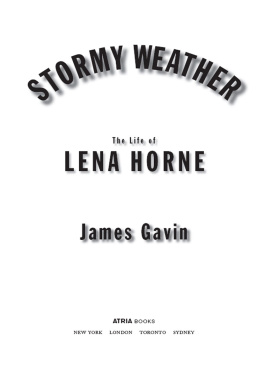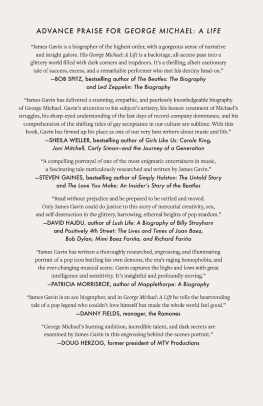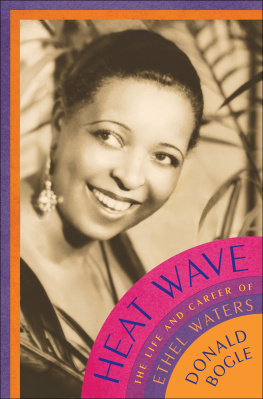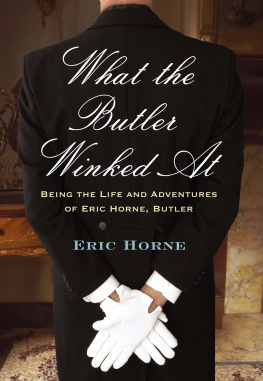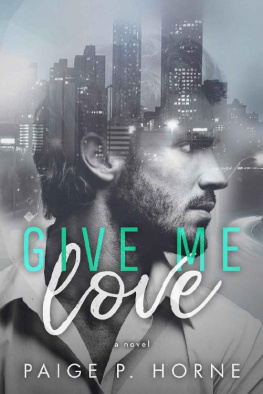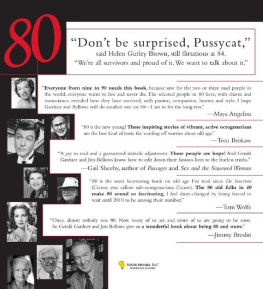All rights reserved, including the right to reproduce this book or portions thereof in any form whatsoever. For information address Atria Books Subsidiary Rights Department, 1230 Avenue of the Americas, New York, NY 10020
ATRIA BOOKS and colophon are trademarks of Simon & Schuster, Inc.
The Simon & Schuster Speakers Bureau can bring authors to your live event. For more information or to book an event, contact the Simon & Schuster Speakers Bureau at 1-866-248-3049 or visit our website at www.simonspeakers.com.
INTRODUCTION
ON A GRAY, rainy Manhattan day in April 1994, I walked to the Wyndham, a midtown hotel, to do an interview for the New York Times . My heart was pounding, for I was about to meet Lena Horne, an intimidating show-business and cultural icon. Her first new album in years was due out shortly. It was a bold move for a singer who would soon turn seventy-seven, and who was so identified with her beauty and her feral stage presence that most of her records had sold poorly. Youve got to see her, went the explanation.
But shed found a reason to brave the studio once more. Well Be Together Again was a tribute to the friend she missed most: composer-arranger Billy Strayhorn, Duke Ellingtons right-hand man and Hornes soul mate until 1967, when he died of cancer. Horne herself had drifted in and out of view since 1985, when she closed a forty-two-city tour of Lena Horne: The Lady and Her Music, her one-woman evening of revisionist autobiography. The show had run fourteen months on Broadway in 19811982 and earned her a Tony, two Grammys, and an avalanche of raves.
The publicity extolled her as a black woman who had battled racism and crushing loss with ultimate dignity, while conquering almost every corner of white-dominated show businessHollywood, Las Vegas, Broadway. In an age when black film actresses were confined either to low-budget race movies or to playing maids or whores, Horne was the screens first Negro goddess and bowed to no one. Regal and classy, she helped redefine white Americas image of the black female.
But for a long time, much of her own race had seen her as something else: a Hollywood-groomed aristocrat, out of touch with their hardships. When she sang her theme, Stormy Weather, in a haughty voice of satin, it was hard to accept her as anything more than a cunning supper-club seductress. What did anyone who looked like that have to be unhappy about?
In The Lady and Her Music, she told them. Horne talked about the pain that racism had caused herparticularly in Hollywood, where roles shed wanted desperately were held out of reach. In interviews she spoke of the strain of carrying a mantle for her race; of personal battles subverted to the cause; of losing four key men in her life, starting with Strayhorn, in four years. Finally, in her sixties, this long-suffering freedom fighter had triumphed over every demon. The closing number of The Lady and Her Music found her shouting out, Youve got ta believe in yo- self ! like a southern evangelist. At every show, her audiencethe first substantially black one of her careerleapt to its feet, bursting with the glory of human potential.
But as Horne told more than one reporter in that dreamlike late flowering, it was all too little, too late the wounds and the rage went too deep. Not much had changed since 1942, when the Negro Cinderella, as she was once called, filled out a questionnaire for the PR department of her new employer, M-G-M. Asked for her philosophy of life, the twenty-four-year-old replied: Never hope too hardnever pans out.
That attitude carried through to 1994, as the Blue Note label prepared to release her new CD. Im sorry this poor record companys gonna have trouble! she said wistfully.
Yet here she was, submitting to an interview that might prove helpful. On that April day, Horne met me in the lobby of the Wyndham. By her side was a black man in his seventies, Sherman Sneed, her now-feeble longtime manager. Horne lived across town, but had stayed at the hotel before, and still used it sometimes for interviews. She wore a baggy white suit with a white cap and big dark glasses. Even so, she was unmistakablethe skin near-flawless, the exquisite bone structure, the smile as blindingly white as ever.
I felt the famous Horne jolt, and my mouth fell open; involuntarily I stepped back. At that moment I understood, like never before, the power of the beautiful, who live on pedestals. They inspire awe and envy; we covet or resent them. Whatever the case, theyre not like the rest of us, and we dont let them forget it. Horne had seen reactions such as mine since childhoodcertainly since 1933, when she entered the Cotton Club as an unknown chorine. She couldnt sing and was a bad dancer, as she put it, yet wound up with the solo spot the other girls wanted, followed by a part in a Broadway play. Eight years later, M-G-M chose her as the Negro beautiful enoughin a Caucasian fashionfor white Americans to accept.
The experience, for Horne, had not ended happily, and it showed. By the 1950s, her sweet presence in her early films was gone, replaced by a calculating, fire-spitting nightclub vixen. Beautiful had become a permanent prefix to her namea constant reminder of what had pushed her to the top, even as colleagues and critics proclaimed her artistry. Her command of the stage, and her ability to mesmerize an audience, were awesome, said the singer Abbey Lincoln. But no amount of hard-earned vocal finesse could outshine her looks, which werent anything I really earned, said Horne. To her, beautiful took on a dismissive subtext: She looks good but she cant do nothin.
Peggy Moffitt, a top model of the 1960s and 70s, recalled sitting among Hornes adoring audience at the Cocoanut Grove in Hollywood, circa 1962. I thought she hated us all, said Moffitt. But she marveled at how ingeniously Horne disguised that loathing: She used it as though it were sexy. By then, the singer was also turning her wrath upon Lennie Hayton, her white husband and musical director. Lena is a very nasty woman, honey, said a fellow Hollywood beauty and Vegas headliner.
Having heard such impressions, I panicked when Sherman Sneed left me alone with Horne after a brief hello. She and I took the elevator to her suitea seemingly endless ride. But the woman who some had been described as scary wasnt that at all; she seemed warm, funny, and more than a little sad. The pressure of living as a symbol had taken its toll; weariness showed in her movements and her voice. Once wed sat down in her room, she spoke with a candor that startled mea seventy-six-year-old unburdening herself to a thirty-year-old. Why am I here? Horne wondered aloud, and she wasnt talking about the interview. My kid left, my father left, my husband left, Billy leftwhy am I still here?

